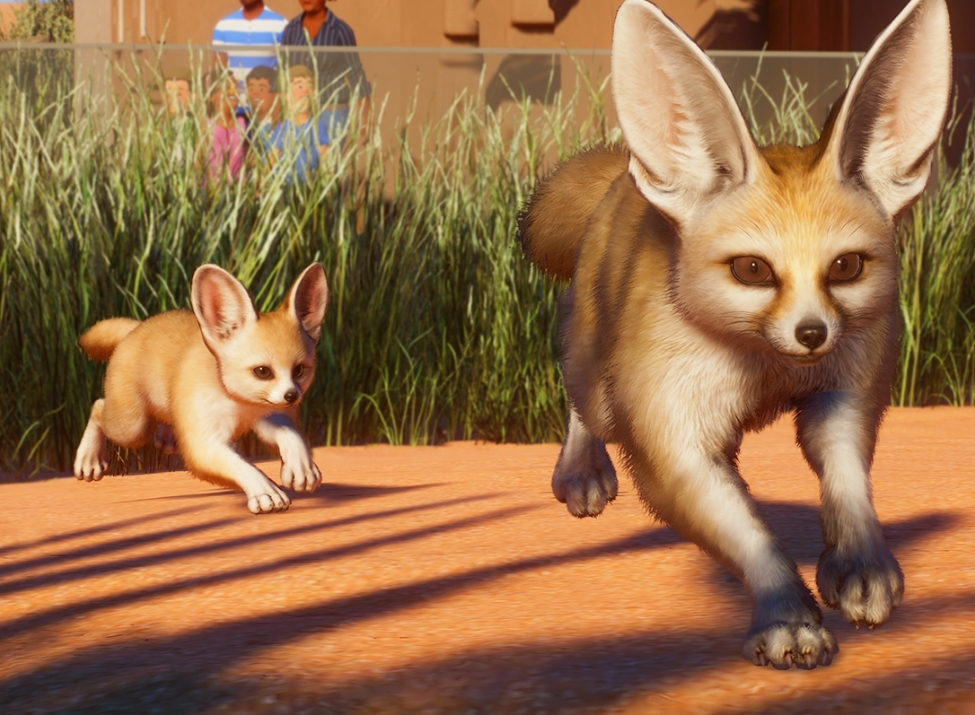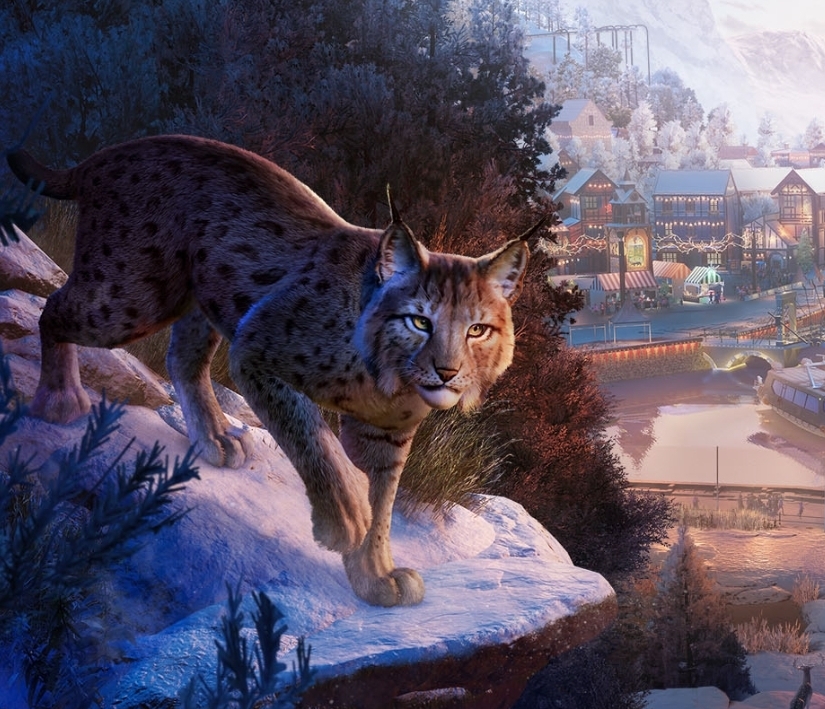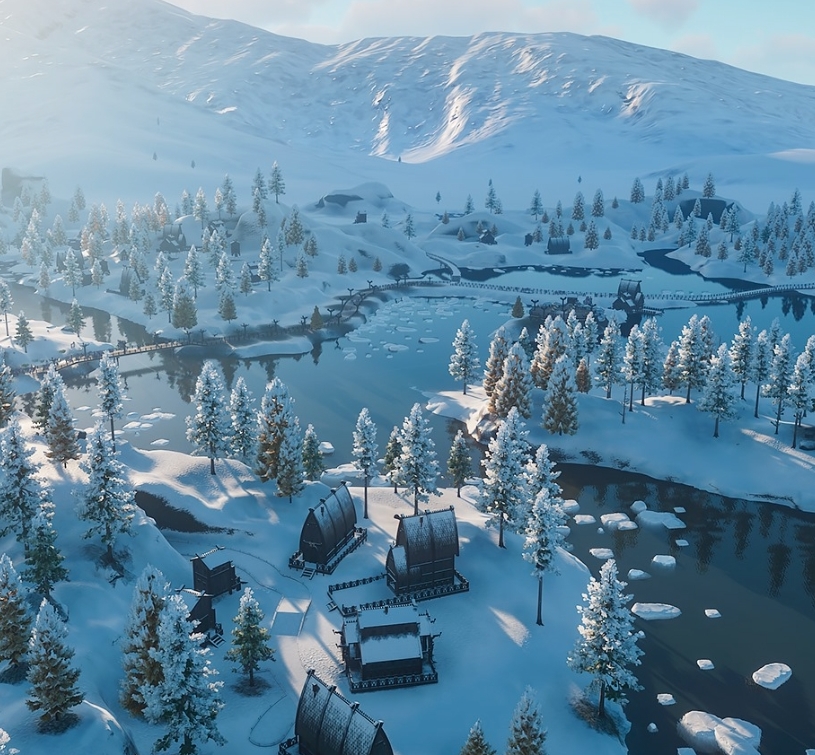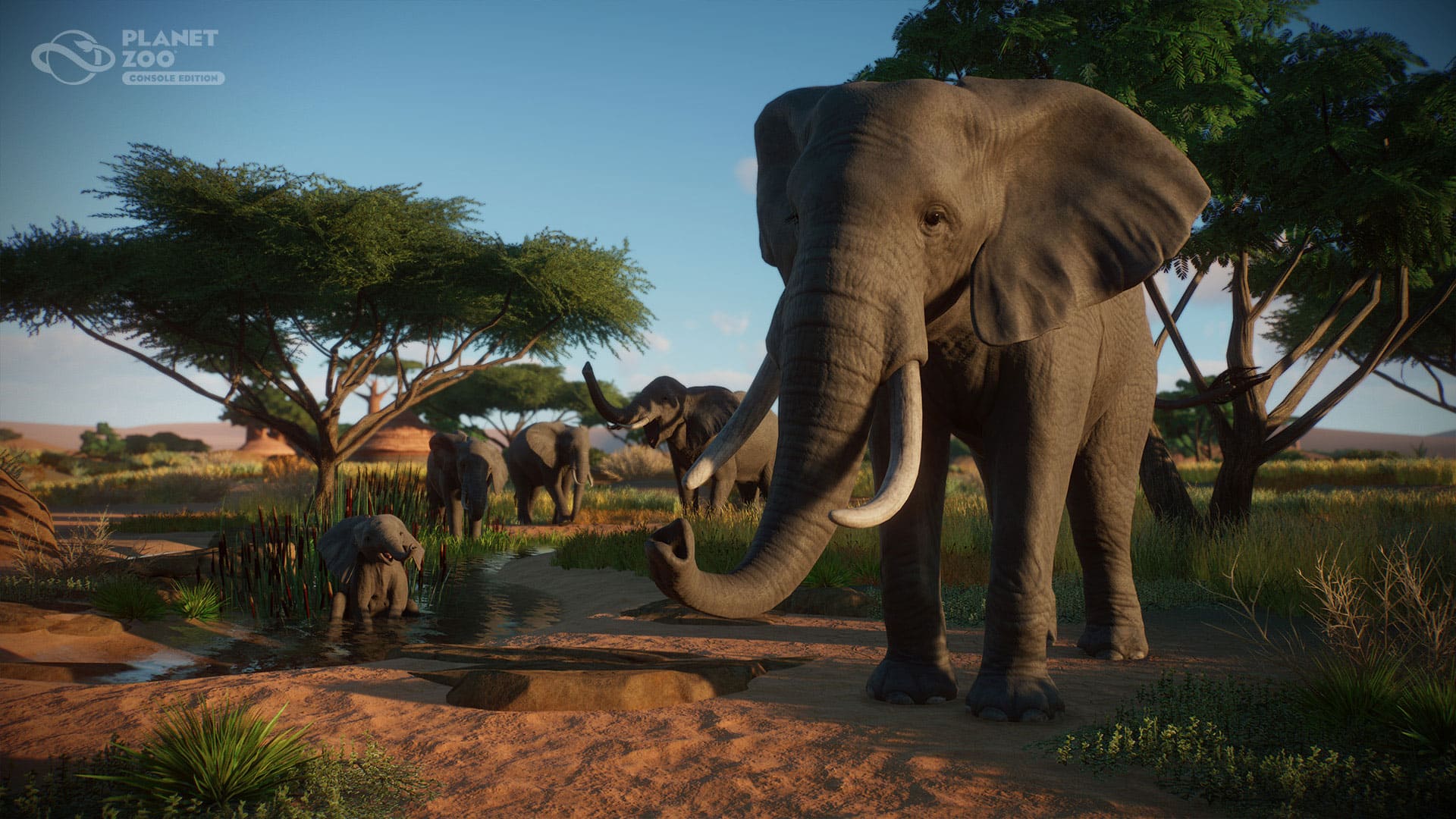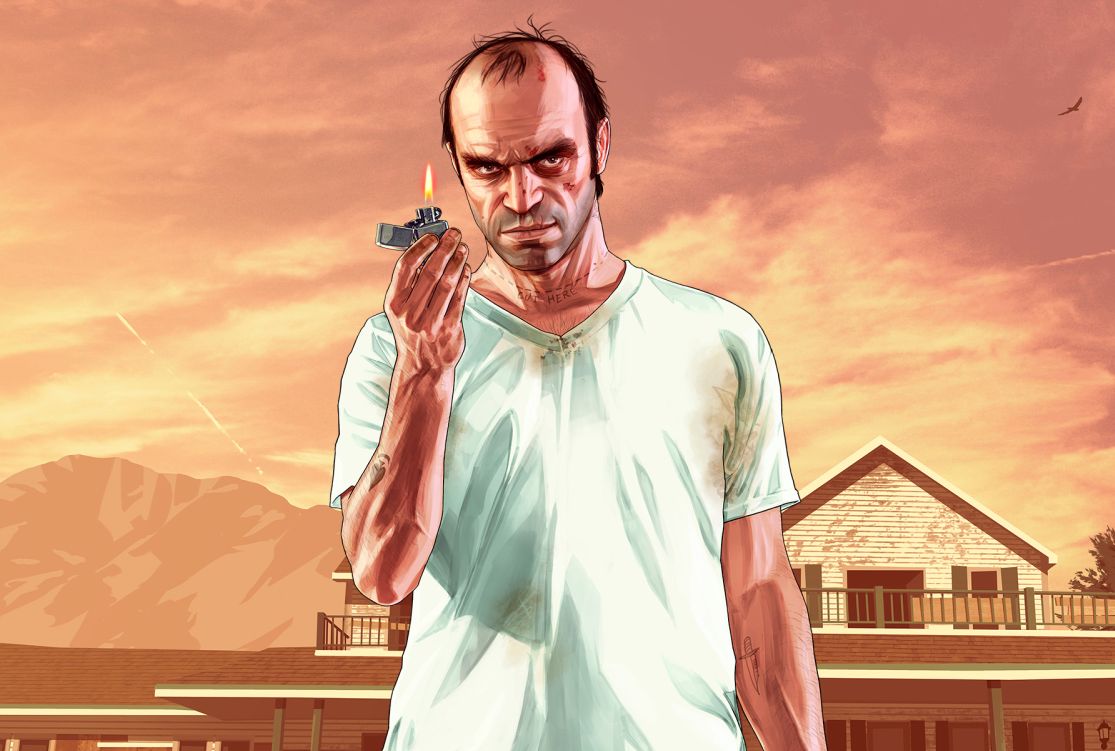![[Top 10] Planet Zoo Best Starting Animals](/sites/default/files/styles/responsive_image_600xauto/public/2022-12/top_10_planet_zoo_starter_animals_2_0.jpg.webp?itok=xU1UfQYr)
[Top 10] Planet Zoo Best Starting Animals
Planet Zoo's starting animals are cheap to buy, fast to reproduce, and cheap to feed. In franchise mode, they can be used to get conservation credits, which are important for buying better, higher-rated animals. You want higher-rated animals to get more appeal for the zoo. So let’s start this countdown to Planet Zoo's lovely starting animals!
But first a warning: Be careful of inbreeding, as that affects the genes of the animals negatively. It will usually cost a lot of conservation credits if the animals start inbreeding. So be careful.
10. Bengal Tiger
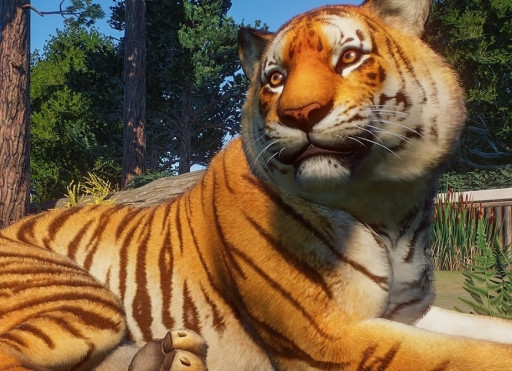
The Bengal Tiger is a personal favorite. But it's also a great starter animal for easy conversation credits.
They reproduce a little slowly, but make up for it by usually having multiple offspring. They have a high level of appeal, which means more people will come to the zoo to see them.
Breeding them is super easy. But be watchful when the cubs grow into adults. There will be too many males and females in the group, and they will start fighting.
They also add an aquatic element to any zoo. They do require some water to swim in, which will give you an opportunity to build a lake or pool that people can look into to see them swim.
The only downside is that they can be expensive to feed. That’s why they are at number ten on our list. So be mindful of how many you have and if you can afford it.
Why Bengal Tiger is a Great Starting Animal:
- Adds Aquatic element to any zoo: Requires a deep water area
- Fast to reproduce: Usually has about four cubs every time with good genes
- High Appeal: Brings lots of people to zoos
- Sell for high conservation credits: The larger the animals and their appeal, the higher they will sell for.
Animals Stats:
- Fence Grade: 3
- Tropical habitat
- Group Size: Up to One Male and up to One Female
How to get the Bengal Tiger: It is in the Standard Edition of the game.
Bengal Tiger usefulness score: 80/100
9. Fennec Fox (Africa Pack DLC)

The Fennec Fox is part of the Africa DLC. They are small and require little space. Give them some sand, a few plants, and some burrows, and that’s it. Let them reproduce and sell the babies for lots of conservation credits.
They are adorable to look at, with lots of cute animations. They are cheap to buy with cash from the store and earn a good amount of conservation credits when sold. Fennecs are also cheap to feed and super cute! They are an easy starting animal for small, desert zoos. And they live in colonies, which makes for lots of breeding for conservation credits.
Why the Fennec Fox is a Great Staring Animal:
- Small Habitat Size: A small habitat makes for small expenses for building it.
- Live in Colonies: Lots of offspring to sell
- Low Mature Time: Takes only one year for kits to grow to adults
Fennec Fox Stats:
- Fence Grade: 2
- Desert Habitat
- Group Size: Up to Five Males and Up to Five Females
Fennec Fox Usefulness Rating: 82/100
How to get the Fennec Fox: The Fennec Fox is part of the Africa Pack DLC.
8. Indian Peafowl

Indian Peafowl are commonly known as Peacocks. They are a lovely addition to any zoo. But don’t be fooled by their beauty. Paying attention to this habitat is a must for all zoos. For if left alone for too long, it will overwhelm any keepers and result in inbreeding galore and poop everywhere!
These birds populate very quickly and have many offspring at once. Sometimes there is no end to them. Be vigilant for this starting animal. They draw a large number of people.
They are good starter animals due to their rapid reproduction and maturation.They will give any zoo lots of conservation points in a short time. Just be sure to keep an eye on them.
Why the Indian Peafowl is a Great Starting Animal:
- Fast Reproduction: Lots of babies make for lots of sales
- Sterility at Death: Can have babies until death of the animal means you don’t have to worry about selling old animals.
- Big groups: Big groups being able to coexist makes for lots of babies
Indian Peafowl Stats:
- Fence Grade: 1
- Tropical or Grassland Habitat
- Group Size: Up to Four Males and Up to Sixteen Females
Indian Peafowl Usefulness Rating: 85/100
How to get the Indian Peafowl: They are in the Standard Edition of the game.
7. Greater Flamingo
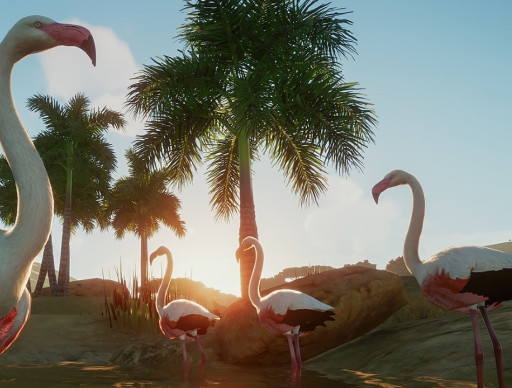
The Greater Flamingo
The Greater Flamingo are elegant birds that require lots of space. They are like the Indian Peafowl with making sure to keep the population regulated. Don’t let them inbreed, as the conservation credits value will go down a lot.
These are great starter animals as they breed fast and have multiple offspring at once. Fighting is not a worry in this group of animals.They all get along! Amazing, right? They need big groups as one of their requirements to make their habitat better.
They reproduce very easily and fast, which makes them perfect for getting lots of conservation credits. But beware the poop and feeding costs. Like any animal, the more they eat, the more they poop. Make sure to have lots of keepers for this habitat.
Why the Greater Flamingo is a Great Starting Animal:
- Very Large Group Sizes: Large group sizes makes more babies to sell
- Incubation is 1 month: Super short incubation period for eggs makes it faster to release babies
- Easy Feeding: They use a feeding pool that feeds a large group at once
Greater Flamingo Stats:
- Fence Grade: 1
- Many Biome habitats can be used
- Group Size: Up to 500 Males and Up to 500 Females
Greater Flamingo Usefulness Rating: 87/100
How to get the Greater Flamingo: They are in the Standard Edition of the game.
6. Gharials
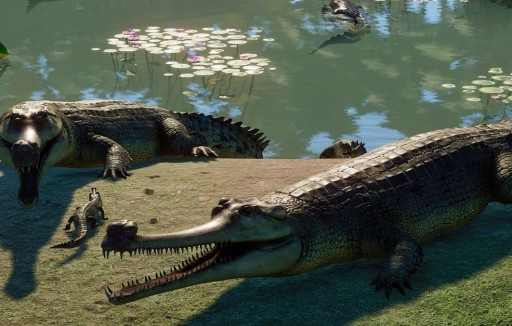
Gharials are big, cool-looking crocodiles. They are a great starter animal because they don’t really fight in large groups. So if overpopulation happens in a zoo, the animals won’t get injured and have to go to the vet. That’s great for keeping costs down for starter zoos.
These gharials make up to fifty eggs at a time! That’s a lot of tiny conservation credits at once. They sell for cheap but add up due to the amount of them.So this animal is a great starter for people who like crocodiles.
They are also relatively low-maintenance. That doesn’t require constant vigilance like the Peafowl. They can be on their own for long periods. Just make sure to clear them out every once in a while.
Why Gharials are a Great Starting Animal:
- Lots of eggs at one time: Lots of eggs mean lots of conservation credits.
- No dominance fights: No fights mean no vet costs or injured animal inspection costs.
- Short incubation time: A three-month incubation time is relatively short.
- Very Easy Reproduction Rates: Very easy reproduction rates help make eggs faster.
Gharials Stats:
- Fence Grade: 2
- Aquatic and tropical habitats
- Group Size: Up to Seven Males and Up to Seven Females
Gharials Usefulness Rating: 90/100
How to get the Gharials: They are in the Standard Edition of the game.
5. Nile Monitors
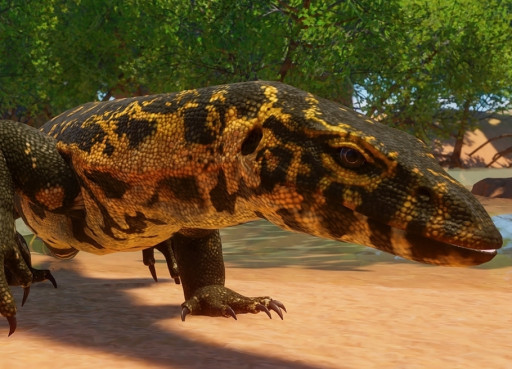
Nile Monitors are simple and very easy to take care of. They are cheap but large, with not much habitat required. Some great, simple habitats have been made for this gentle creature. At least in the game, they are gentle.
These are very low-maintenance animals. Just make sure they are always warm and have food and water. These, like the majority of the other starter animals on this list, lay eggs.They bring a fair amount of appeal for maintenance costs.
Just make sure to check when the babies grow up, or there will be many fights breaking out. Otherwise, these are very low-maintenance starter animals.
Why Nile Monitors are Great Starter Animals:
- Easy maintenance: Low maintenance is fine for these animals.
- Low buying costs: If buying for cash, they are very low in cost, but the babies will sell for lots of conservation credits.
- Long Sterility Time: This means they can have children until they die.which means fewer animals to rehome.
Nile Monitors Stats:
- Fence Grade: 2
- Tropical and Grassland Habitats
- Group Size: Up to Two Males and Up to Three Females
Nile Monitors Usefulness Rating: 92/100
How to get the Nile Monitors: They are in the Standard Edition of the game.
4. Cheetah
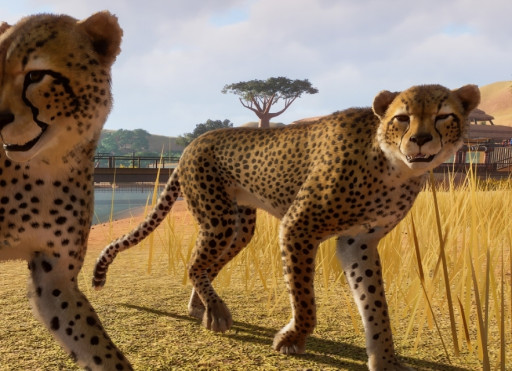
Cheetahs are a nice and easy starter animal. Like animal number ten on our list, the Bengal Tiger, they are a little on the pricey side in terms of feeding costs. However, the offspring far outweigh the cost of feeding the Bengal Tiger. Zoos can get much more positive results by releasing these vulnerable felines.
The cheetahs need lots of land, which costs a little in fencing. However, they usually have large litters. An adult cheetah sells for lots of conservation credits or money. The cubs take about two years, so zoos won’t have to worry about fighting for a while. But be aware when they start fighting because it will be quick and cause many injuries.
Relatively high feeding costs make for an expensive starter animal. That’s why we recommend getting them a little further into your starter zoo. But otherwise, these are low-maintenance and high-reward animals.
Why Cheetahs are Great Animals:
- Low upkeep: No need to constantly check in on cheetahs.
- Long Sterility for a Feline: Less buying of Cheetahs with up to 12 years of fertility
- A relatively long maturity period means even lower maintenance.
- Low purchase price: low cash price on the open market
Cheetah Stats:
- Fence Grade: 3
- Grassland and Desert Habitats
- Group size: Up to Three Males and Up To One Female
Cheetah Usefulness Rating: 94/100
How to Get the Cheetah: They are in the Standard Edition of the game
3. Cuvier’s Dwarf Caiman (South America Pack DLC)
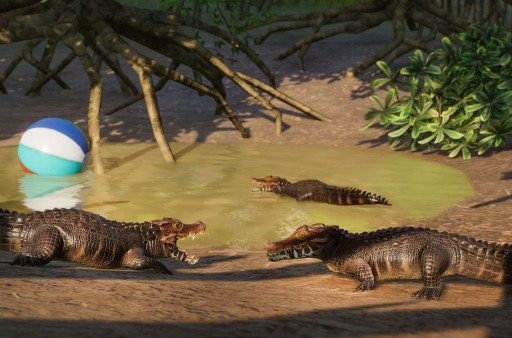
Cuvier’s Dwarf Caiman is a great habitat to set up and then forget about. Yes, the habitat will get overrun very quickly. However, turning on the contraception switch ensures that the many babies will grow up and then be released in large numbers.
Cuvier’s Dwarf Caiman is super easy to maintain. Just make sure they have plenty of water to float in. Give them some platforms in the water so they can rest. Have at least one keeper set up a zone just for them to give them food, and they are set until selling time.
There’s not much else to say about Cuvier’s Dwarf Caiman. Low maintenance cost, low food cost, and a high birth rate are the main points for this starter animal. That is why it is at number three.
Why Cuvier’s Dwarf Caiman Make Great Starter Animals
- Extremely low maintenance: Low maintenance means little worrying until release or sale times.
- Set it and forget it!: Forget about this habitat, then come back to it and sell all the cute caimans. It really works.
- Low incubation period: Just one month is all it takes to get some adorable babies to grow up.
Cuvier’s Dwarf Caiman Stats:
- Fence Grade: 2
- Aquatic, Grassland, and Tropical Habitats
- Group Size: Up to Six Males and Up to Six Females
Cuvier’s Dwarf Caiman Usefulness Rating: 97/100
How to Get the Cuvier’s Dwarf Caiman: Buy the South America Animal Pack DLC
2. Puff Adder
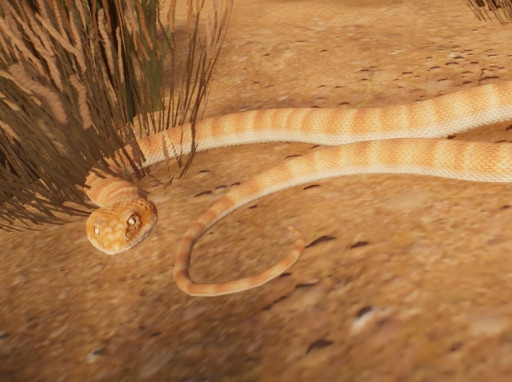
The Puff Adder is a personal favorite. But really, any snake will do. Generally, most exhibits will generate money and conservation credits. Just make sure to set the "sell immediately" toggle option on the exhibit.
Snakes are semi-popular and have quick offspring.The Puff Adder is no exception. The adder produces lots of babies quickly while still having high appeal.It is an excellent starter animal for any zoo.
Why the Puff Adder is a Great Starter Animal:
- Super easy maintenance: With the added toggle for immediate selling, this is almost on autopilot.
- Semi-High Appeal: Simple Appeal at a Low Cost
- Cheap to get: buying a Puff Adder from the store is generally very cheap.
Puff Adder Stats:
- Fence Grade: Exhibit
- Grassland Exhibit
- Average Group Size: One to Five
Puff Adder Usefulness Rating: 98/100
How to Get the Puff Adder: They are in the Standard Edition of the game
1. Common Warthogs
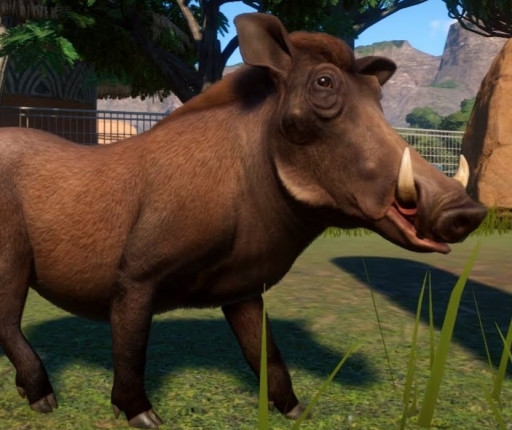
Finally, we have number one on our list, the Common Warthog! These are the easiest and cheapest starter animals. It is recommended to start with this animal because it is so easy to maintain and set up.
The tutorial of the game actually uses warthogs as the starter animal. That’s mostly the reason it's number one. They are not cute, but they are the easiest to get started on in a beginner zoo.
They reproduce quickly and have a large number of piglets at once.They are very cheap to buy, but they also give a good amount of conservation points and money when needed. They have good appeal for the beginning of the game. The Common Warthog is the best starter animal on Planet Zoo.
Why the Common Warthog a Great Starter Animal:
- Super Easy Maintenance: Really only need one keeper for this habitat depending how big it is
- Good appeal for the start of the game: appeal is high for an easy animal
- makes good money: sells for a relatively high price.
- Not much detail: Just stating a zoo, the warthog is a bare minimum habitat set up. Very easy for beginners
Common Warthog Stats:
- Fence Grade: 2
- Grasslands and Tropical Habitat
- Group Size: Up to Four Males and Up to Seven Females
Common Warthog Usefulness Rating: 99/100
How to Get Common Warthog: They are in the Standard Edition of the game
And that's it for the Top 10 Planet Zoo Starter Animals! We hope it was helpful!
You May Be Interested In:
- Planet Zoo Best Exhibit Animals
- Planet Zoo All DLCs Ranked
- Planet Zoo Best Biome
- Planet Zoo Best Zoo
Other Articles You May Be Interested In:
- The Sims 4 Careers: 10 Highest Paying Jobs
- Planet Coaster And 400,000 Copies: The Community Behind This Thrill Ride Of A Simulator
- [Top 25] The Sims 4 Best Beauty Mods Everyone Should Use


